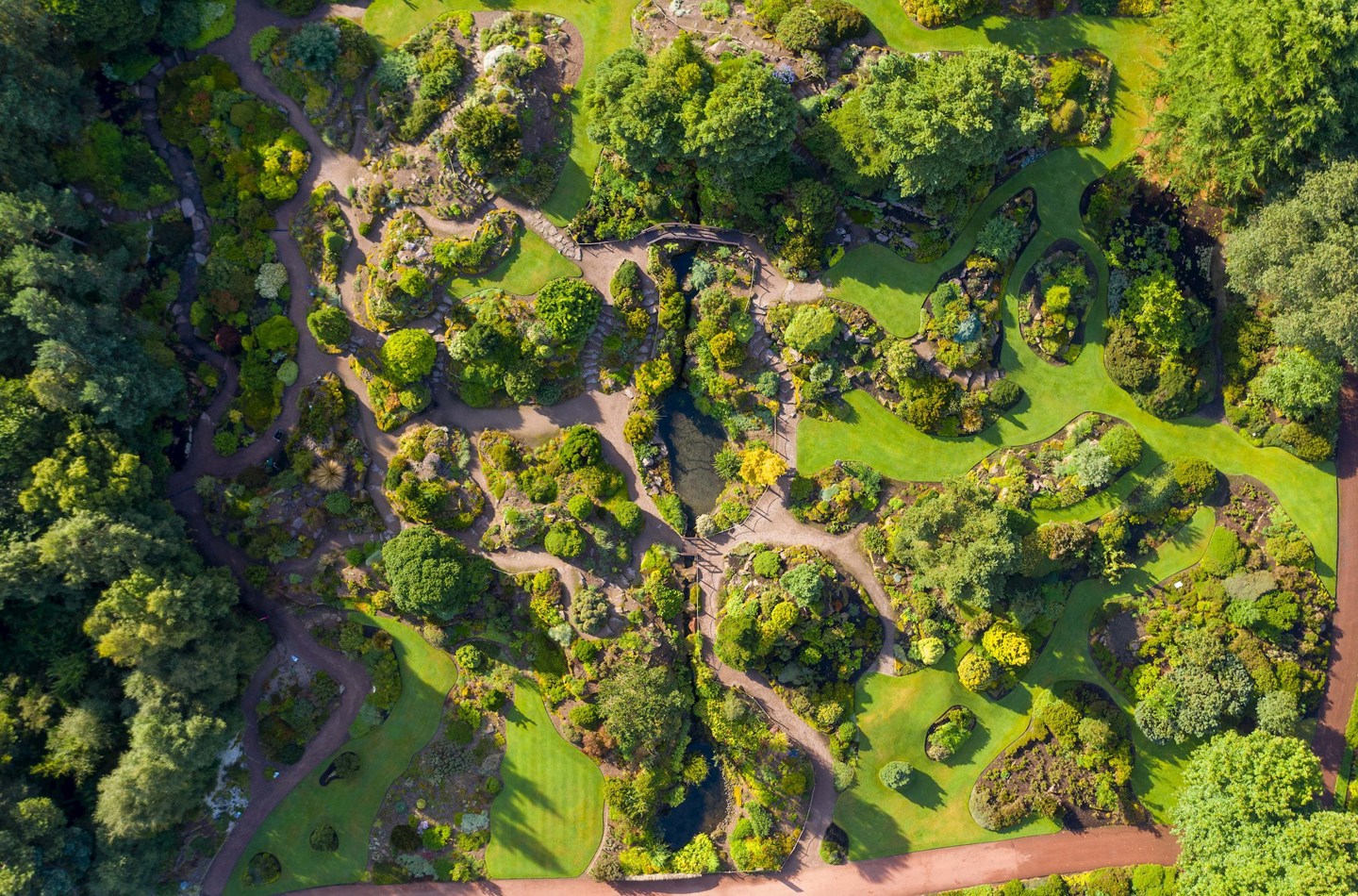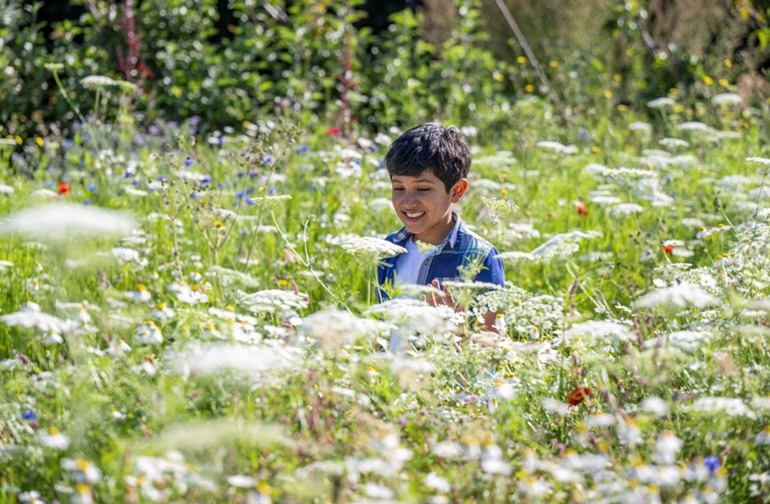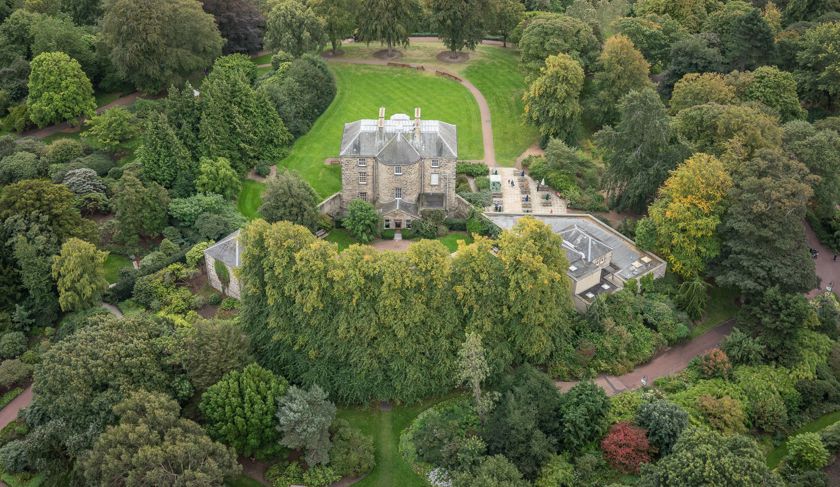
Royal Botanic Garden Edinburgh
A national treasure of Scotland, our spectacular Living Collection of plants is over 350 years old.
-
When visiting Scotland, a trip to the world-famous Royal Botanic Garden Edinburgh is unmissable. Experience an extravaganza of plants from around the world, learn about the Garden's rich and diverse Living Collection and discover a history dating back to the 17th century.

Set in over 70 acres of beautiful landscape and just one mile north of the city centre, the Garden offers superb panoramic views of the city skyline featuring Edinburgh Castle. The Botanics, as the Garden is affectionately known locally, is breathtaking at any time of year.
Garden highlights include the Rock Garden, the Alpine Houses, Woodland Garden, Pond, the Arboretum or tree collection, the Chinese Hillside, the Rhododendron Collection and the Scottish Native Plants Collection in the Heath Garden.
Visitors cannot help but leave with a deeper appreciation and understanding of the importance of plants in our world, and the need to support the Garden's important work.

-
Visitor information
Please note that our Glasshouses are currently closed as part of Edinburgh Biomes, the Garden’s major restoration and construction project. Work is now underway to protect our globally important Living Collection of plants for future generations. We apologise for any inconvenience.Opening times
The Garden is open daily*.
November to January:
10am - 4pm (last entry 3.15pm)
October and February:
10am - 5pm (last entry 4.15pm)
March to September:
10am - 6pm (last entry 5.15pm)
* closed 25 December and 1 JanuaryIn extreme weather the Garden may close. Please check this website for updates.
Admission
Garden entry FREE
Temporary access changes
Please look out for Edinburgh Biomes signs during your visit. They will advise you of temporary access changes while work on the Edinburgh Biomes project is progressing.
Plan your visit
Ways to explore
Explore the Garden
- Read video transcript
-
Video Transcript Time Description [captions] Royal Botanic Garden Edinburgh, a world centre of engagement with plants and globally important conservation collection the Wollemi pine, Wollemia nobilis, critically endangered in the wild Chinese paperback maple, Acer griseum, isolated in fragmented populations in the wild the maidenhair tree, Ginkgo biloba, oce thought to be extinct in the wild, thriving at the Botanics Edinburgh showcases the world of rhododendrons. The Garden is the guardian of a globally important collection [image of plant label 'Rhododendron macbeanum, Conservation Status: Endangered'] Plant collections from China...to Nepal...and Scotland. Safeguarding biodiversity. the wooly willow, Salix lanata, vulnerable in the UK Catacol whitebeam, Hedlundia pseudomeinichii, critically endangered. Plant conservation in Scotland for the word
-
-
Getting there
The Royal Botanic Garden Edinburgh has two entrances: the West Gate on Arboretum Place (EH3 5NZ) and the East Gate on Inverleith Row (EH3 5LP).
Bus: The West Gate (John Hope Gateway visitor centre) on Arboretum Place is served by Lothian Buses 29, 42 and 24 via Stockbridge and the Majestic Bus Tour (0131 220 0770). The Garden's East Gate entrance on Inverleith Row is served by bus routes 8, 23 and 27 from the City Centre.
Bicycle: Bicycle stands can be found at the East Gate and the West Gate.
Car: There is metered on-street parking available near the Garden’s West Gate (John Hope Gateway) on Arboretum Place. Blue Badge parking spaces are located on Arboretum Place, see the Accessibility section of our website for more information.
Address: 20a Inverleith Row, Edinburgh EH3 5LR
Seasonal highlights
-
Contact the Visitor Welcome Team
If you have any queries relating to visitor facilities, accessibility or Lost Property, please call us on 0131 248 2909 or get in touch by using the enquiry form.
If you wish to make a complaint, please read the Complaints procedure.
Get in touch
Save the Palm Houses Appeal
- Read video transcript
-
Video Transcript Time Description [Arit Anderson, Garden Designer, TV Presenter] Please support the Royal Botanic Garden Edinburgh's Palm House Appeal. Your help is needed to save the Palm Houses. First opened nearly 200 years ago, they are in urgent need of restoration. Rusting ironwork, ineffective glass, and crumbling stonework are putting the Palm Houses future and the plants they conserve at risk. Restoration will protect almost 400 species of plants housed within these magnificent buildings. [William Hinchliffe, Arboricultural Consultant] The Palm House is a really beautiful building. You can pick it out from different points in the city. You can find it from the Castle Esplanade or the top of Arthur's Seat. It's one of those features that really helps you navigate to where the garden is within the city. [Duncan Young, Senior Horiculturist] When I was younger, I would quite often come here and visit with my parents, and it was always a standout building, and that's what inspired me to become a horticulturist here. [Elinor Leslie, Comunity Gardener] This is magical. To be able to see all these plants from all over the world. And I think inspirational as well in ways that it can really show all of us how fragile our climate is. [David Knott, Curator of the Living Collection] We can't grow all the plants that are threatened in the wild, but growing a small selection of them in the Palm Houses allows us to tell some of the amazing stories of plants and their importance to humankind. [Eve Armstrong, Education Outreach Officer] The Palm Houses can help us to address the challenges of the climate crisis and biodiversity loss because they help people to understand plants, and animals, and habitats around the world. We can only protect what we care about, and by experiencing it here in Edinburgh, we can care about habitats around the world. [Greg Kenicer, Head of Graduate Education] The Palm Houses are a complete inspiration to our students. They are a great place to learn about that huge array of plants that we look after here in the garden, to find out about how to look after them, about how to study them and understand them as plants, and really get to know about their diversity. [Kevin Bannon, Horticulturist] One plant in particular that represents the importance of the glass houses would be the Trachycarpus princeps. It's possibly the largest one in cultivation. It was one of the last palms to leave and be in the Palm House. Especially it's important that, you know, we keep these mature plants. The Palm Houses give these plants the height, space, and freedom to grow. [Tiina Sarkinen, Biodiversity Scientist] The Palm Houses here at RBGE really enable us to look at large plants. So plants are one of the largest organisms living on this planet. In Scotland, the only way to see them is in these magical and majestical houses. [All staff] - We need your help. Please join us in this crucial project. To save the Palm Houses. And turn our vision into reality. Please donate to our restoration appeal today. Your gift will ensure that this precious plant collection. Can continue to thrive for years to come. Your donation will make a big difference. [Arit Anderson] Please donate today to help save the Palm Houses, support the research work that goes on inside them, and protect the plant life for future generations to come.